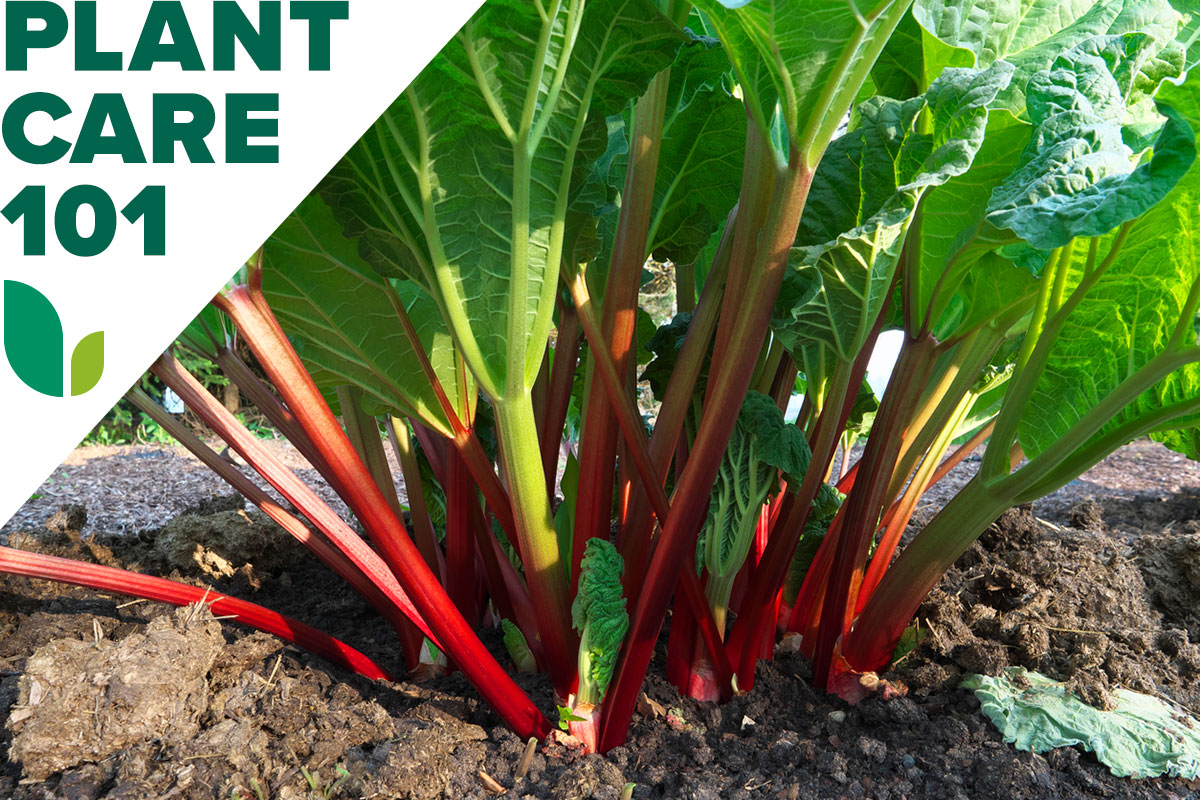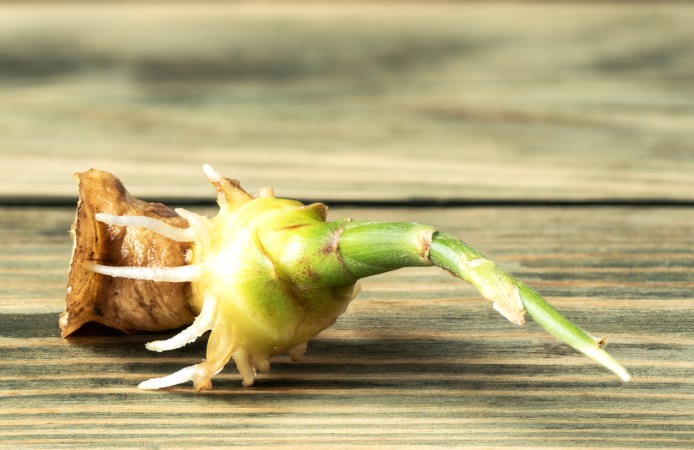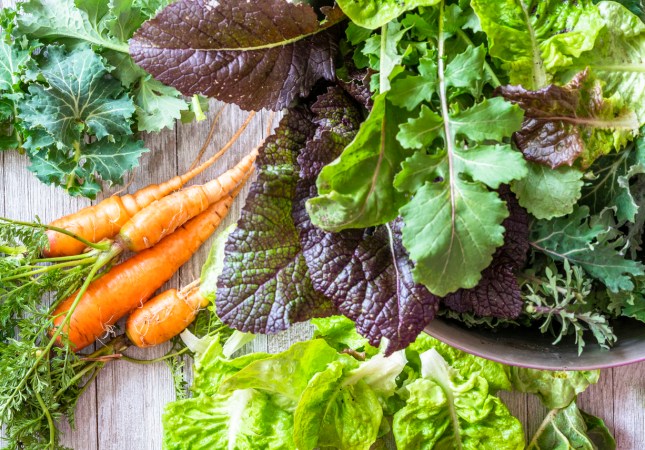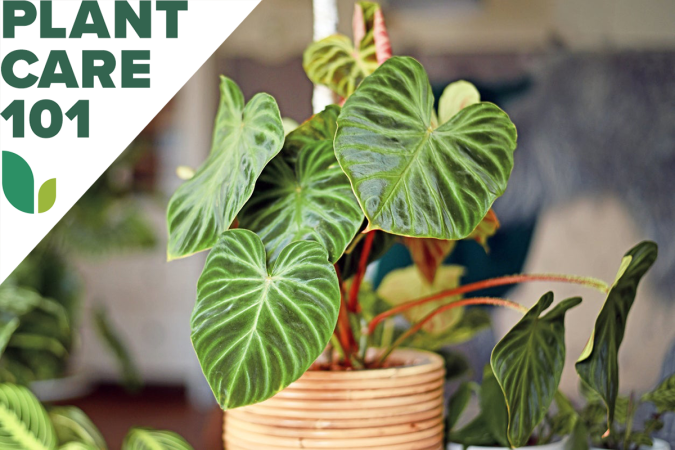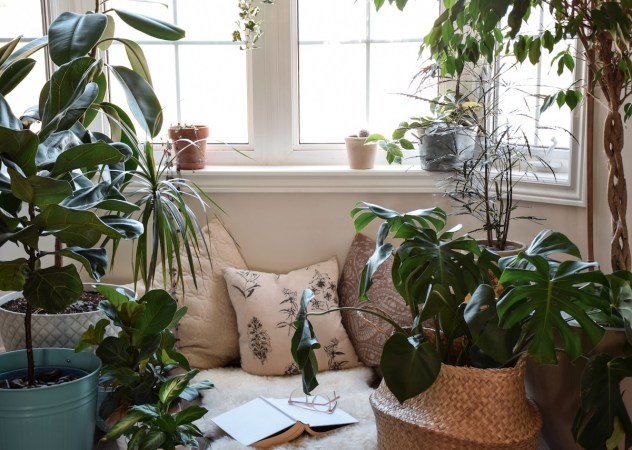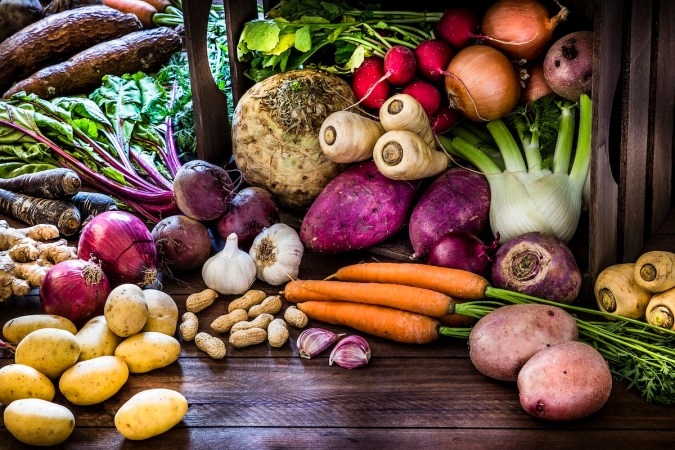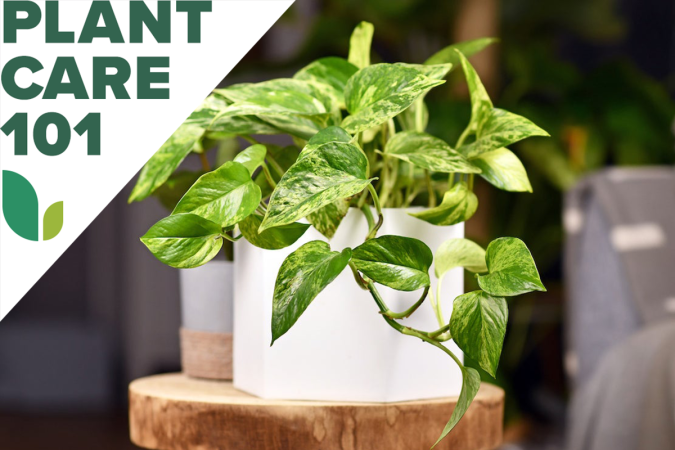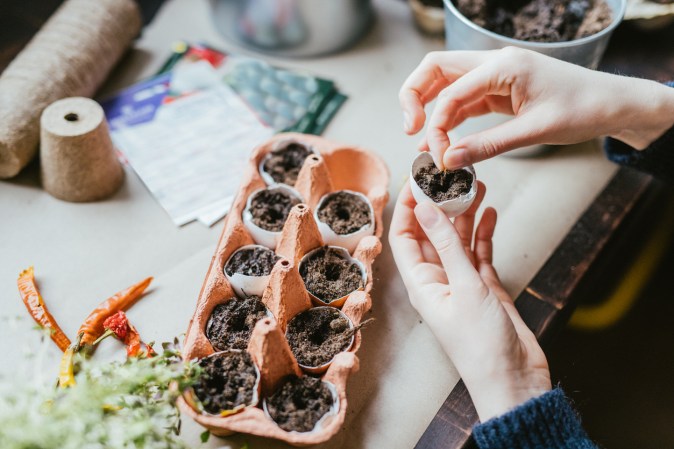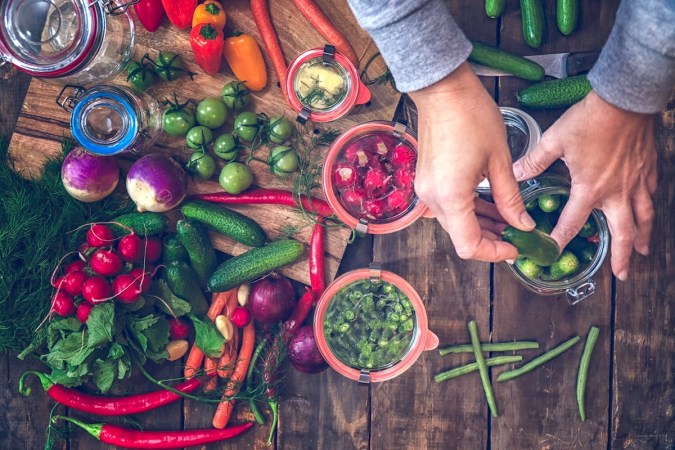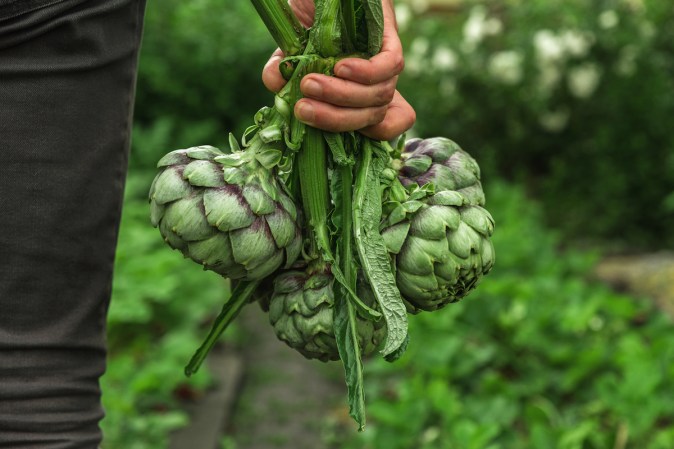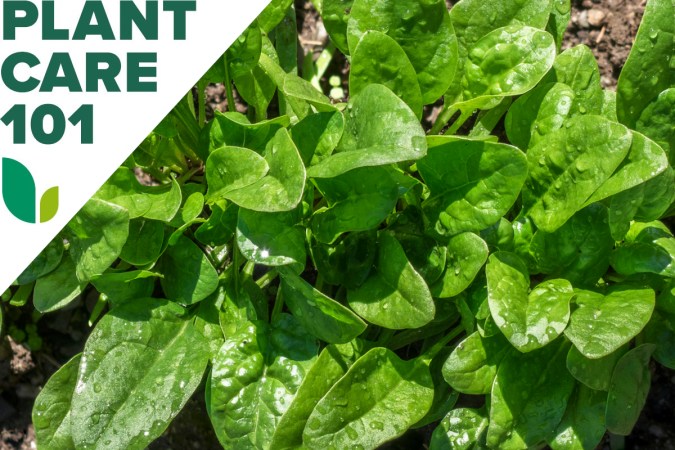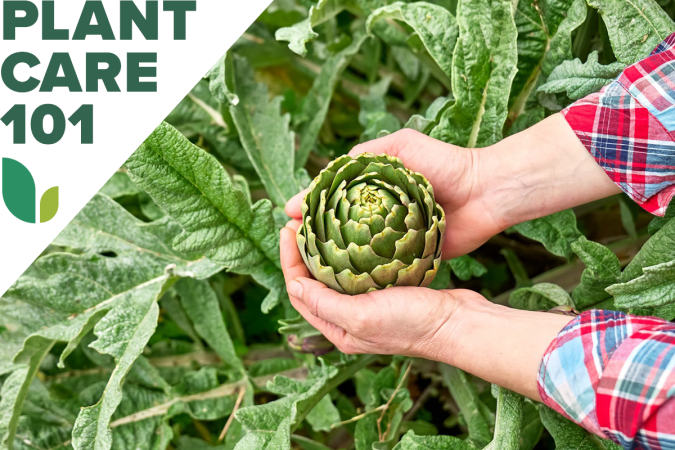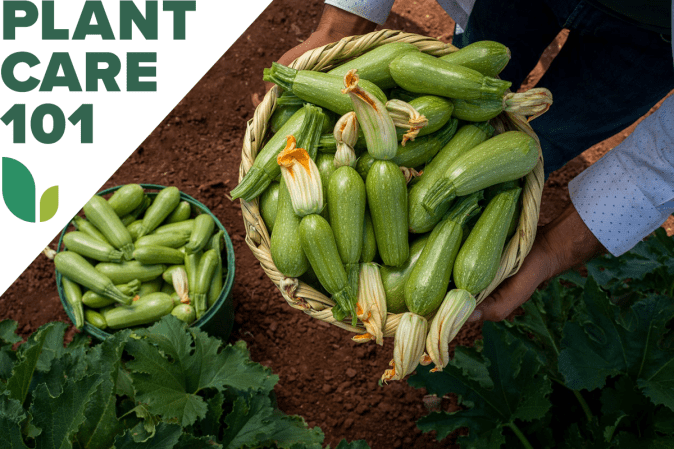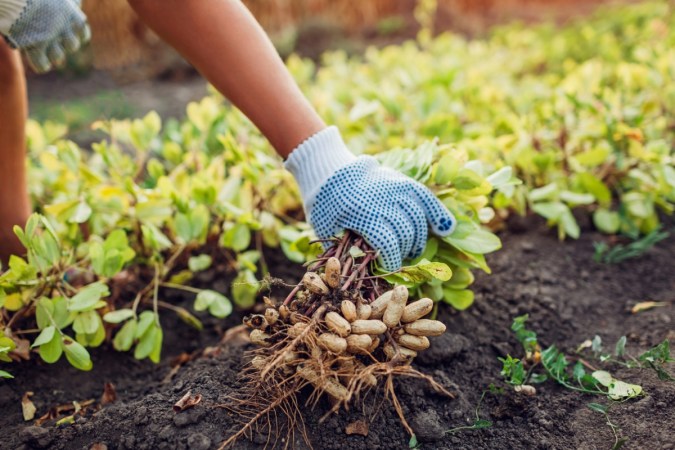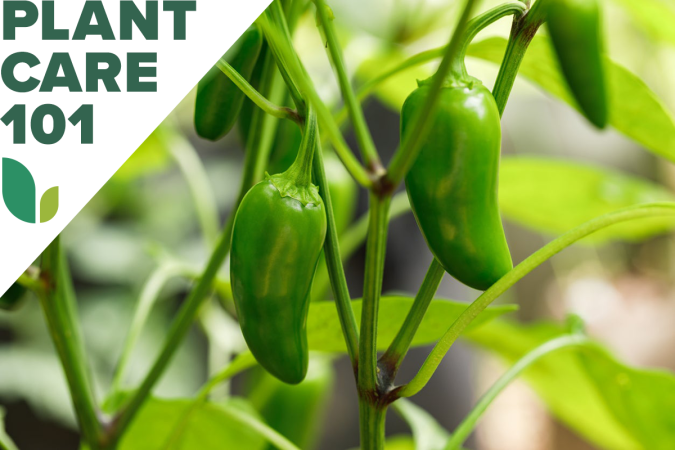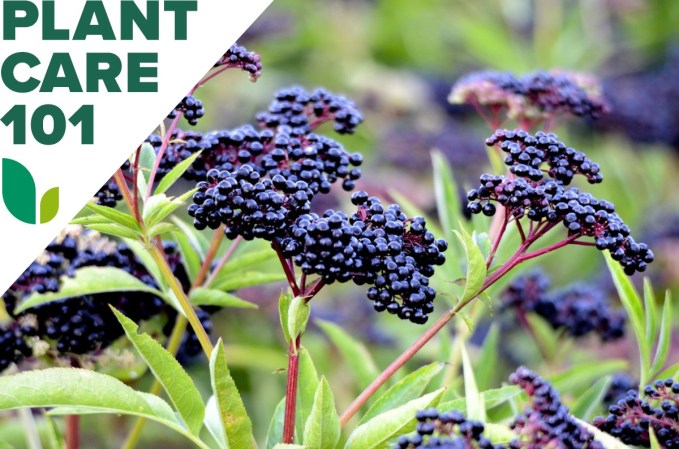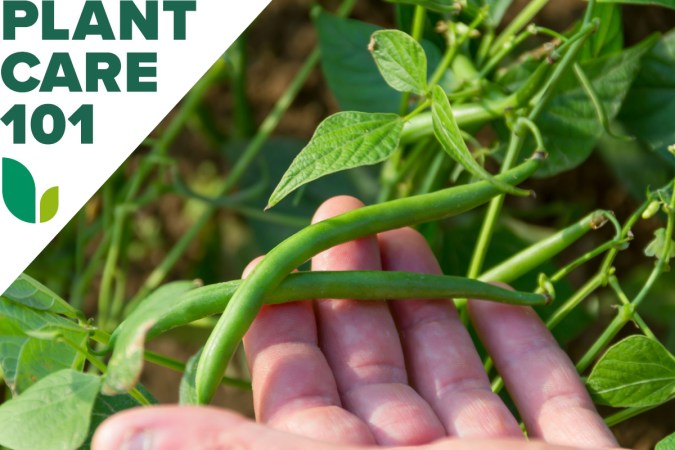We may earn revenue from the products available on this page and participate in affiliate programs. Learn More ›
One of the largest perennial vegetables you can grow at home, tart rhubarb is usually treated as a fruit. When combined with plenty of sugar, it can be used to bake delectably sweet-sour desserts like rhubarb pie. Since rhubarb’s foliage is toxic, this vegetable is raised for its red or red-tinged green leaf stalks rather than the leaves that are on top of them.
When considering how to grow rhubarb, keep in mind that—because it requires temperatures below 40 degrees in winter to thrive—it performs best in USDA Hardiness Zones 3 through 8. However, southern gardeners may be able to grow it as a winter annual.
Growing Rhubarb at a Glance
Common Name: Rhubarb
Scientific Name: Rheum rhabarbarum
Hardiness Zone: 3 through 8
Soil: Well-drained fertile loam
Light: Full sun to partial shade
Water: Medium
Food: Compost and organic fertilizer
Propagation: Division of crowns or seeds
Safety: Leaves are toxic to pets and livestock; stalks are edible
RELATED: 15 Vegetables That Grow in Shade
Rhubarb Characteristics
A likely cross of the Chinese species Rheum rhaponticum and Rheum palmatum, rhubarb plants typically stand about 3 feet tall. The stalks for which the plant is grown may reach an inch or more in diameter and 2 feet in height, topped by toxic heart-shaped leaves that can measure 2 feet across.
The flower stalk, which may shoot up to 5 feet, produces plumes of small greenish-white blooms in summer. Those are followed by winged seed pods before the plant dies back to the ground over winter.
Although the oxalic acid that makes the leaves potentially lethal is also present in the stalks, the stalks contain much less of it, so they are considered non-harmful for most people. However, persons with particular medical issues will want to avoid consumption of rhubarb.
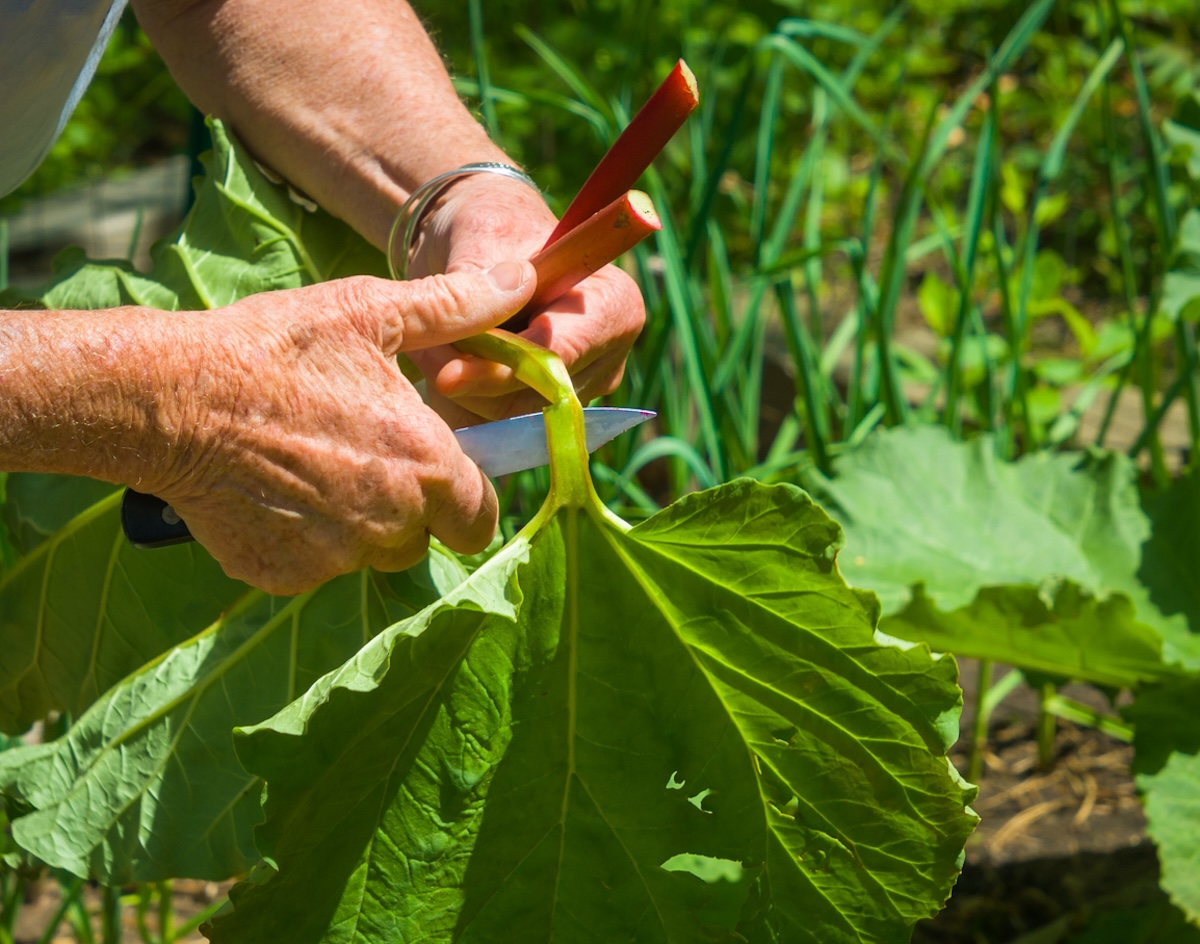
Recommended Rhubarb Varieties
- Victoria: Dating back (appropriately enough) to the Victorian era, this cultivar produces 2-foot red-green stalks.
- Glaskin’s Perpetual: Also an heirloom originating in 1920, this red 2- to 3-foot cultivar has less oxalic acid in its stalks than most rhubarbs, making it sweeter than other varieties.
- Crimson Red: This cultivar offers bright red 2-foot stalks and is hardier than most, even growing in Zone 2.
Planting Rhubarb
Due to the plant’s size, growing rhubarb in containers is not a good idea. However, here’s everything you need to know about cultivating rhubarb in garden soil at home.
When is the best time to plant rhubarb?
Plant rhubarb in early spring when its crowns are dormant, four to six weeks before your last frost. Gardeners in Zones 9, 10, and 11 should set out rhubarb in autumn and grow it as an annual over winter, since this plant, which prefers cool summers, won’t tolerate sizzling temperatures.
Where can rhubarb grow?
For the best rhubarb growing conditions, choose a location in full sun offering well-drained, moist, fertile loam with a pH between 6 and 6.8. The plant also will grow in partial shade with 5 to 6 hours of sunlight per day. Because you’ll need to leave rhubarb in place, select a site that won’t be tilled every spring.
How do you plant rhubarb?
When planting rhubarb, first work 3 to 4 inches of compost into your garden bed to help provide high fertility and good drainage. Only then should you move onto the planting process:
- Plant each crown 1 to 3 inches beneath the surface of the soil with the crown bud or buds pointing upward.
- Position the crowns 3 feet apart from each other.
- If you are setting out rhubarb seedlings instead, plant them after the danger of frost has passed at the same depth they grew in their pot.
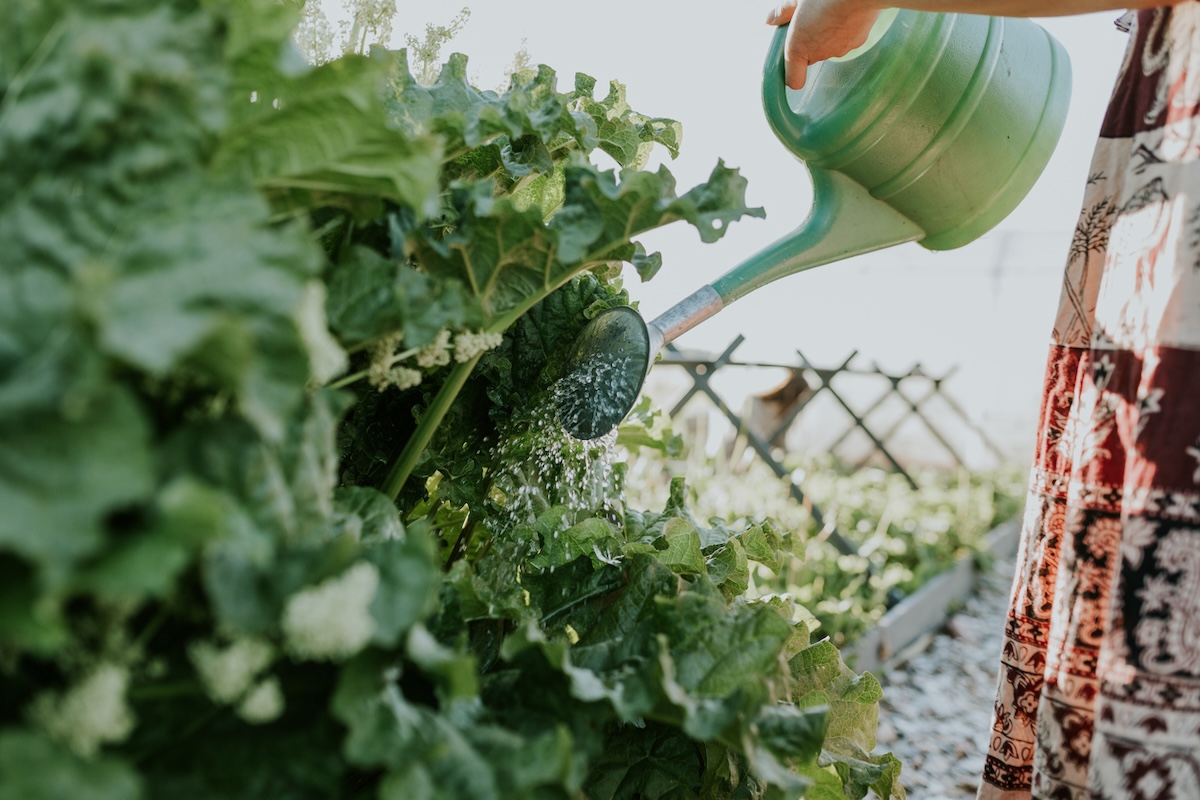
Watering Rhubarb Plants
When growing rhubarb, keep in mind that the plant will require at least one inch of rain a week or its equivalent in irrigation. If possible, use a soaker hose to prevent water from getting on the leaves, or water the plants in the morning so that any moisture on their leaves will dry off quickly, helping to prevent fungus diseases. A heavy layer of mulch should help keep the soil damp; place it around the plants rather than atop their crowns to prevent rot.
Fertilizing Rhubarb
Dig 3 to 4 inches of compost into the planting area before you plant your rhubarb to enrich the soil. If your plants are already established, mulch them with 3 to 4 inches of compost to help preserve their health and keep weeds down.
As for fertilizer for rhubarb, feed each plant with a half cup of 10-10-10 fertilizer in spring or one cup of an organic fertilizer such as 5-5-5, spreading it around the plant beneath the mulch. Don’t dig it in or you may damage the rhubarb’s roots.
Propagating Rhubarb
Rhubarb is best propagated by division, about once every 5 years. Dig up the crowns in early spring and divide them into sections, each having at least one crown bud. Then replant them 3 feet apart.
Although cultivars don’t come entirely true, you can start rhubarb from seed. After soaking rhubarb seeds for two hours, sow them in small pots of damp and sterile seed starting mix about six weeks before your last frost date, covering them with ¼ inch of the mix. After they germinate in 2 to 3 weeks, thin them to the strongest seedling in each pot.
RELATED: 10 Easy-to-Grow Vegetables for Beginning Gardeners
Safety Considerations
As mentioned above, rhubarb leaves are toxic to humans due to the leaves’ high oxalic content. According to the ASPCA, all parts of the plant can be toxic to pets and livestock, which may suffer “kidney failure, tremors, and salivation” if they eat it.
Because even the edible leaf stalks contain smaller amounts of oxalic acid, they should be avoided by people suffering from gout, kidney disease, or rheumatoid arthritis. Don’t harvest stalks that have been damaged by late freezes, as they may contain higher than usual amounts of the acid.
Potential Pests and Diseases
Rhubarb has its own personal pest called the rhubarb curculio, which is actually more likely to originate on nearby curly dock weeds. This beetle measures ½ to ¾ inch long and has a downward-curving snout. If you see holes in the crowns and stalks of your plants, you may need to remove the beetles by hand. You can help control rhubarb curculio by keeping dock plants cleaned out of the area surrounding your rhubarb crop.
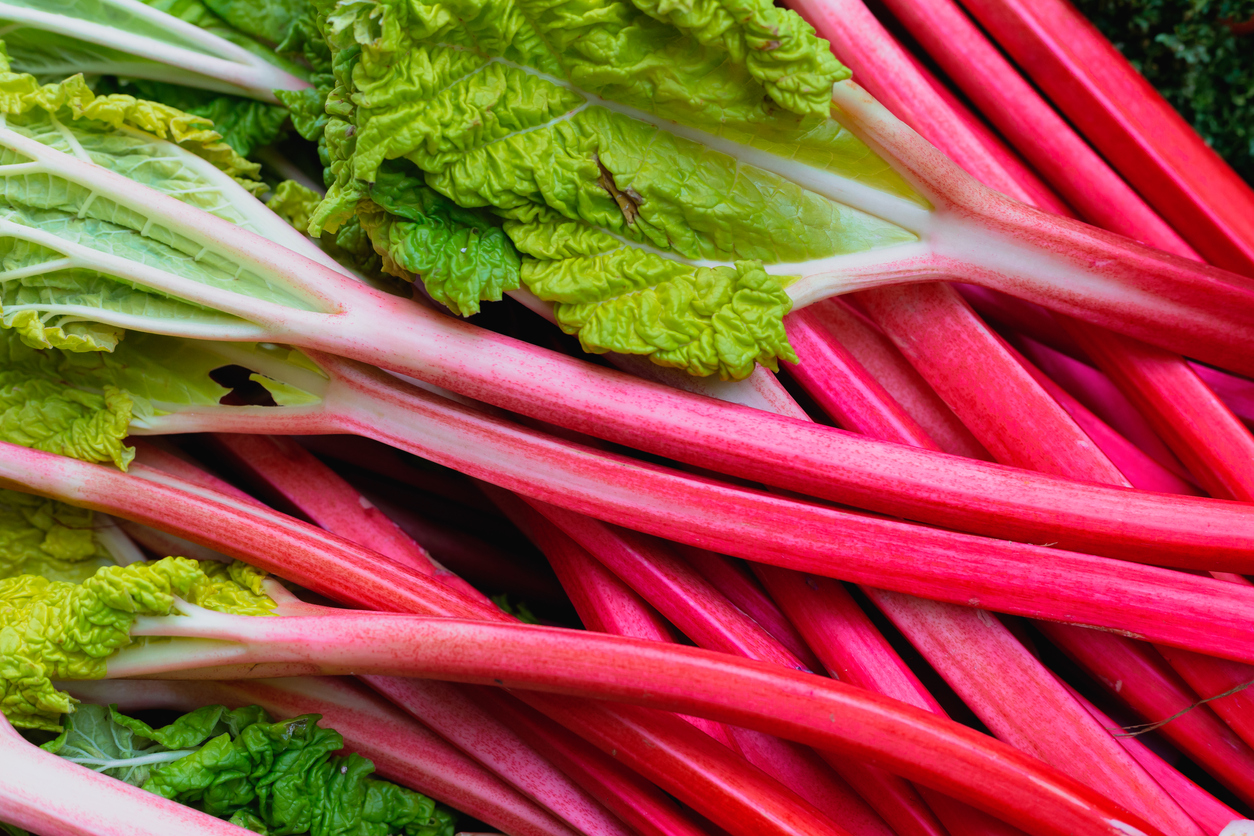
Harvesting Rhubarb
Because they’re perennial vegetables, don’t harvest any rhubarb during your plants’ first year to allow them time to become established. You can harvest from crown-grown plants during their second year and from seedlings during their third year, but never pick more than half the stalks.
When is the best time to harvest rhubarb?
Harvest rhubarb in late spring and early summer when the stalks reach the appropriate size for your cultivar, usually about 1 inch in diameter. In northern zones, rhubarb season runs from late April to late June. Keep in mind that rhubarb ripeness isn’t calculated by redness, since not all rhubarbs have red stalks.
RELATED: How to Grow Your Own Food
How do you harvest rhubarb?
Avoid cutting rhubarb stalks as that can allow the entry of disease, and follow these steps in order to properly harvest your rhubarb:
- Grasp a stalk, bend it sideways, and twist it to detach it from the crown.
- Immediately cut off the leaf as its retention may cause that stalk to wilt.
- Add the leaves to your compost pile.
How do you store rhubarb?
Store your harvest of rhubarb in perforated bags in the crisper door of your refrigerator where they should keep for two weeks to a month. Alternatively, chop the rhubarb into pieces and freeze it. You can freeze it raw or blanched. Blanch it for one minute, let it cool completely, and then can pack it into freezer bags or airtight containers.
Looking for more perennial vegetables? Check out our guides on growing artichoke, asparagus, and hops.

